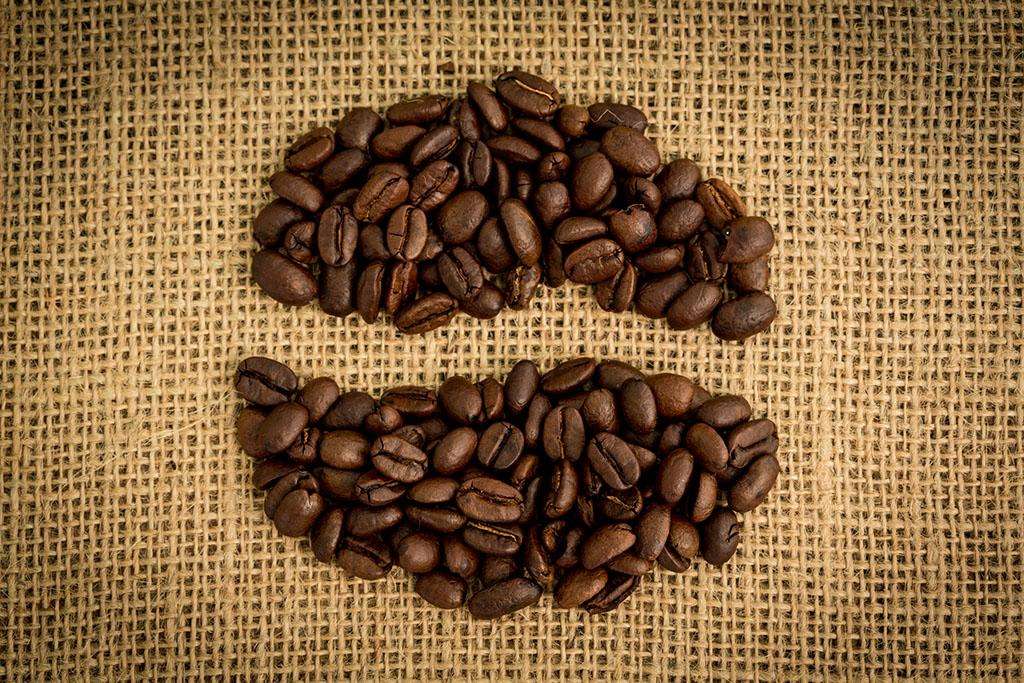Flavor description of Mexican coffee beans, characteristics of planting history and taste description

Professional barista communication, please pay attention to coffee workshop (Weixin Official Accounts cafe_style )
Interesting border coffee-mexico la perla (pearl) estate catura species!
This bean comes from two countries-Guatemala and Mexico. La Perla (La Perla) Manor is so interesting. La Perla means pearl in Spanish. La Perla is also pearl. This manor is located in the mountainous area near the border of Guatemala in Chiapas Province of Mexico. Part of the family coffee garden is actually on the border of Guatemala. It takes about 40 minutes to reach the small village in Guatemala by walking the trail across the barren mountains. In this unique situation, coffee fruits come from two borders. We call her border coffee, Pearl Manor is more than 1650 meters above sea level, and even Guatemala middlemen came to buy it in the early years.
This batch of Pearl Estate Border Coffee has a distinct caramel sugar and vanilla chocolate flavor. The raw beans are very hard and different from the common Mexican beans. It is worth tasting.
The map of Chiapas Province was posted in the small living room of the manor owner. The sun was very bright that day:
BBCode image
When we arrived at the manor, some of the fruits were just ripe for picking. The picture shows the bright red katula species:
BBCode image
This batch of information:
Country: Mexico
Region: Border Mountains of Chiapas
Estate Name: Pearl Estate,Finca La Perla
Breed: Caturra, Caturra species
Treatment method: washing method, rear stage scaffolding solarization
Harvest Date: 2015
Cup flavor:
Sweetness is obvious, caramel and honey, cleanliness is good, vanilla plants, obvious spices and chocolate flavor, overall full and rich.
Maxico Mexico
Population: 11,839,500
Coffee is also grown outside of the key regions listed below, and no roaster or retailer you trust should be overlooked. Of course, production in other regions is very small compared to production in the main region.
CHIAPAS
This region of Chiapas borders Guatemala. Sierra Madre provides the elevation necessary for good coffee production and beneficial volcanic soils.
Altitude: 1,000- 1,750 m
Harvest: November-March
Breeds: Bourbon, Typica, Caturra
OAXACA
Most farmers in the OAXACA region own less than 2 hectares (4.4 acres) of land in this area, and there are several large cooperatives. There are also some larger estates, although some are developed for diversified tourism.
Altitude: 900- 1,700 m
Harvest: December-March
Breeds: Bourbon, Typica, Caturra Maragogype
Mexican coffee
Coffee from the world's fourth-largest coffee producer, Mexico, produces about 5 million bags of coffee annually. Most of its coffee is produced by nearly 100,000 small farmers, and the large estates that once dominated the coffee industry are few and far between. Mexican coffee yields about 630 kg per hectare. Later, the Instituto Mexicano del Café (Inmecafe) took control of the coffee industry. The coffee association controls both coffee cultivation and the market for beans that can be exported from november. The association provides farmers with minimum purchase prices, technical advice and other assistance. Since 1991, however, the activities of the Coffee Association have declined and its functions may be further weakened.
The collapse of the Coffee Agreement and the disappearance of price support actually helped some producers by forcing them to develop their own brands and make closer connections to foreign markets, while the NAFTA agreement between Canada, the United States, and Mexico would further help Mexican exports to North America. Some believe that the best giant coffee beans are grown in Mexico rather than Guatemala, but availability and quality can vary. Maragogype, known as Maragogype, is large in size and produces coffee that is soft, rich, and aromatic. Farmers 'poverty results in most coffee growing naturally, i.e. without the use of chemicals such as pesticides or fertilizers.
Mexico's best coffee is grown in Chiapas, in the south of the country, where coffee varieties include Tapanchula and Huixtla. The Oaxaca region also produces premium coffee beans, among which the naturally grown Pluma Coixtepec beans are the best. Oaxaca also produces Altura Orizaba coffee and Altura Huatusco coffee. Veracruz coffee is produced in the Altura Coatapec region. The best giant coffee beans in Mexico are Liquidambar MS coffee beans.
a rich Mexican coffee.
Flavor Taste Characteristics: Aromatic soft, mellow and comfortable, with wine aroma.
Mexico has a long history of coffee production and is currently one of the world's major coffee producers. Coffee produced in Mexico is naturally called "Mexican coffee".
About 5/6 of Mexico's national area is plateau and mountainous area, with an average annual temperature of 25-27℃; the Mexican plateau has a mild climate all year round, and most of the territory is plateau terrain, with no cold in winter, no heat in summer, and evergreen trees in all seasons, so it enjoys the reputation of "plateau pearl". Due to geographical environment and climate reasons, Mexican coffee planting area is close to Guatemala, mainly producing Cocolabegu, Australuca states, products are mostly highland-produced washed beans, with good aroma and sour taste.
The selection of Mexican coffee is generally done manually. The main basis for selection is according to the fullness of coffee particles, whether uniform, and then divided into grades. Generally speaking, coffee with full and uniform particles is easier to preserve. Only the purest and most uniform coffee beans can be roasted to represent the best and finest coffee in the country.
After the coffee beans are picked, they are spread out in a special room with ventilation on all sides. About a week later, the beans are packed into loose bags so that wind can blow through the bags. After about seven weeks, coffee beans change color and taste. Finally, these coffee beans are manually selected to select high-quality coffee beans and formally bagged for preservation.
Aldumara coffee beans are Mexico's top coffee beans, which are large in size, with intense sweetness, acidity and good aroma.
Mexicans are optimistic and enthusiastic by nature. It can also be seen from their coffee. The mellow Mexican coffee is not only loved by the native people, but also praised by many coffee connoisseurs. There are many ways to taste Mexican coffee, mainly divided into alcoholic and non-alcoholic practices.
Alcohol-free Mexican coffee is often served with milk. Heat a cup of milk, a teaspoon of cinnamon powder and a teaspoon of vanilla powder in a saucepan over medium heat. Then add cocoa powder, dissolve well and stir well. If you like chocolate, you can use chocolate paste instead of cocoa powder mixed with milk. Allow the milk to cool for about 5 minutes before pouring into the coffee. Garnish the coffee with cold cream and a cinnamon stick. Chocolate and cinnamon aromas blend together to give off a desert flavor. Tasting such a cup of coffee, you feel as if you are walking through a desert full of mulberry.
Another recipe is to mix Mexico's most famous tequila with coffee by pouring a small glass of tequila into the bottom of the glass, then pouring milk and coffee, preferably garnished with cream and cinnamon. Tequila is a powerful drink, and if you're brave enough, try this alternative coffee.
Indeed, after drinking Mexican coffee, it really has the effect of forgetting worries and eliminating worries. Mexican coffee has a low taste and strong aroma. Although it is slightly bitter, it is very mellow. It has a unique and strong flavor. It is a wonderful product for afternoon tea and should be carefully tasted. It is also the best choice for blending other coffees and the first sip of coffee that beginners should taste. Mexican coffee is best served hot (around 75°C). After an hour of hot coffee, all the aroma will be gone. If the coffee is not filtered, pour carefully, not stirring the coffee grounds, just like slowly pouring old wine, not only to taste it, but also to enjoy its color.
Important Notice :
前街咖啡 FrontStreet Coffee has moved to new addredd:
FrontStreet Coffee Address: 315,Donghua East Road,GuangZhou
Tel:020 38364473
- Prev

Mexican Coffee Bean Flavor description Historical planting area Distribution
Professional barista exchanges please follow the coffee workshop (Wechat official account cafe_style) this batch of information: country: Mexico production area: Chiapas border mountain manor name: Pearl Manor, Finca La Perla (La Pera Manor) Variety: Caturra, Catura seed treatment method: washing method, latter section of scaffolding sun harvest time: 2015 cups test flavor: sweet taste obvious, caramel
- Next

Climate characteristics of El Salvador Paka, brief introduction of El Salvador Paka
Following Cafe (official Wechat account vdailycom) found that El Salvador has opened a small shop of its own. El Salvador is the smallest country in Central America and the most densely populated country in Central America. Topography to mountains, plateaus, multi-volcanic, Santa Ana active volcano 2385 meters above sea level, the highest peak in the country; the north for the Lompa River Valley; the south for the narrow coastal plain.
Related
- Detailed explanation of Jadeite planting Land in Panamanian Jadeite Manor introduction to the grading system of Jadeite competitive bidding, Red bid, Green bid and Rose Summer
- Story of Coffee planting in Brenka region of Costa Rica Stonehenge Manor anaerobic heavy honey treatment of flavor mouth
- What's on the barrel of Blue Mountain Coffee beans?
- Can American coffee also pull flowers? How to use hot American style to pull out a good-looking pattern?
- Can you make a cold extract with coffee beans? What is the right proportion for cold-extracted coffee formula?
- Indonesian PWN Gold Mandrine Coffee Origin Features Flavor How to Chong? Mandolin coffee is American.
- A brief introduction to the flavor characteristics of Brazilian yellow bourbon coffee beans
- What is the effect of different water quality on the flavor of cold-extracted coffee? What kind of water is best for brewing coffee?
- Why do you think of Rose Summer whenever you mention Panamanian coffee?
- Introduction to the characteristics of authentic blue mountain coffee bean producing areas? What is the CIB Coffee Authority in Jamaica?

